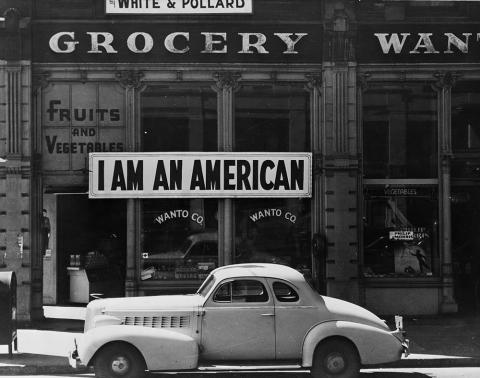
Description
Without due process, the government gave everyone of Japanese ancestry living on the West Coast only days to decide what to do with their houses, farms, businesses and other possessions. Most families sold their belongings at a significant loss. Some rented their properties to neighbors. Others left possessions with friends or religious groups. Some abandoned their property. The black and white photograph taken by Dorothea Lange shows a closed storefront following Executive Order 9066. The owner of the store, a University of California graduate, was housed with hundreds of evacuees in War Relocation Authority centers for the duration of the war. The image highlights the fact 70,000 of the 120,000 interned individuals were American citizens and were not charged with any crimes.
Source-Dependent Questions
- How does the word choice on the banner show the contradiction in the policy by the government?
- What reaction do you think individuals may have had to the banner? What did the store owner hope to accomplish by using this sign?
Citation Information
Lange, Dorothea, "Oakland, Calif., Mar. 1942. A large sign reading "I am an American" placed in the window of a store, at [401 - 403 Eighth] and Franklin streets, on December 8, the day after Pearl Harbor," March 1942. Courtesy of Library of Congress